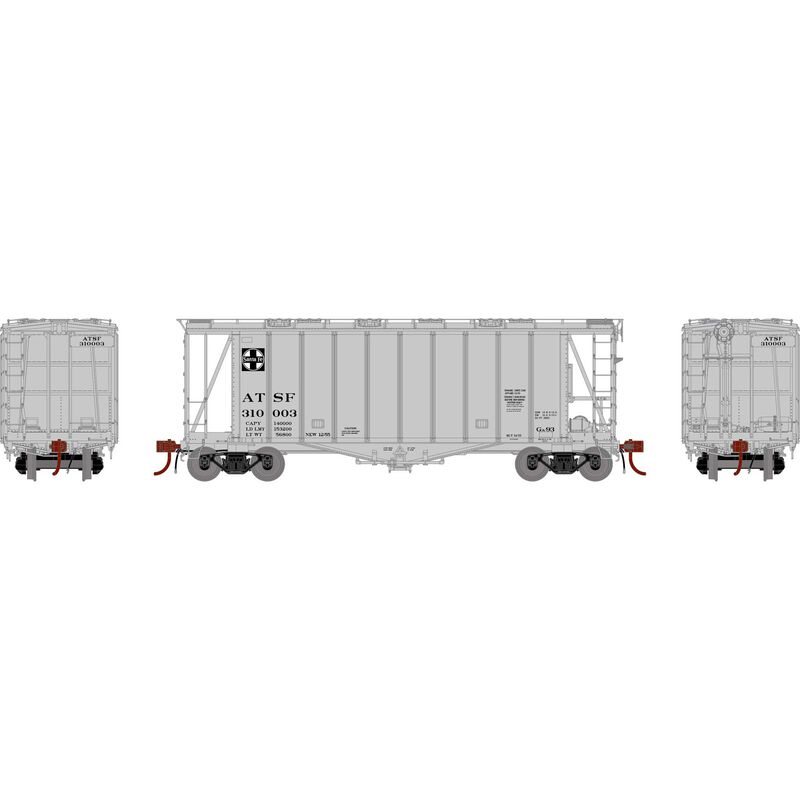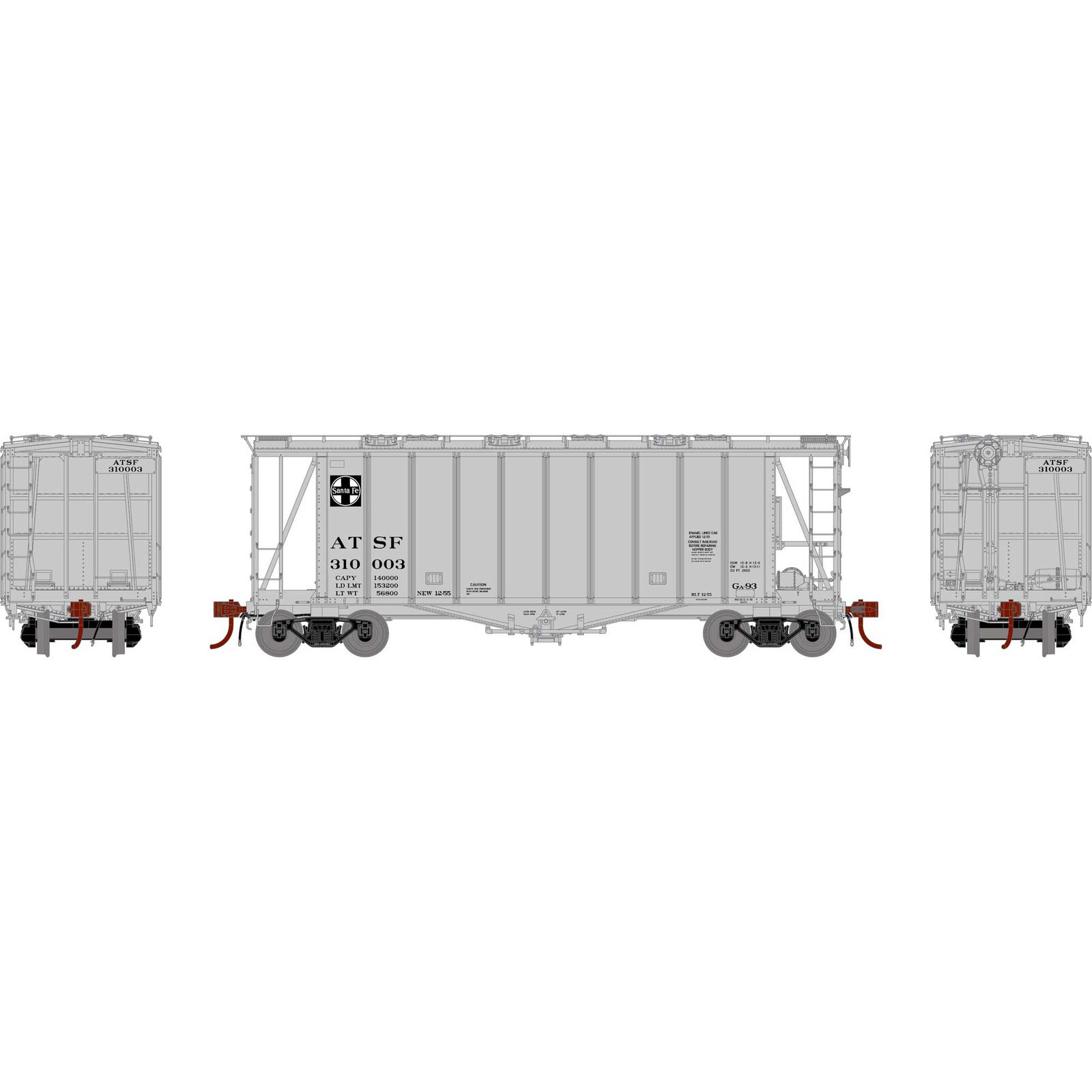MODEL FEATURES:
- Three different body styles
- Rectangular or oval shaker brackets
- See-through metal roof walk
- Highly detailed, injection molded body
- Fully-assembled and ready-to-run out of the box
- Detailed underbody including outlet piping
- Gravity or gravity-pneumatic outlets
- Roller bearing or Bettendorf trucks
- Factory installed wire grab irons and brake piping
- Coupler cut levers and train air lines
- Machined metal wheels
- Weighted for optimum performance
- Body-mounted McHenry® operating scale knuckle couplers
- Operates on all popular brands of track
- Minimum radius: 18"
PROTOTYPE AND BACKGROUND INFO:
For the first half of the 20th century, bulk goods were usually bagged and carried in boxcars. After the late 1940s, covered hoppers greatly simplified the process by allowing the bulk material to be poured in through the roof hatches and dumped out the hopper bays. However, flour, starch, sugar and plastics do not "flow" easily from a standard hopper bay.
To solve this problem, the Fuller Company of Catasauqua, PA, patented the Airslide concept. In an Airslide covered hopper, the bays are formed into two narrow, steep-sided troughs with a layer of air-permeable material at the bottom. Air is pumped through the material causing the lading to fluidize and flow easily through the hopper outlets.
Starting in 1953, General American Transportation began building Airslide covered hoppers. One of the two original configurations was a 2,600-cubic foot, single-bay car with a 70-ton capacity. In addition to railroad-owned cars, there were a number of Airslide covered hoppers leased by GATC to sugar and bakery companies. Later on, larger cars were introduced as the railroads continued to improve their infrastructure. To extend the useful lives of the smaller 2,600 cuft cars, some of them were permanently connected in 2-unit drawbar sets. The drawbar sets operated as a single car, and therefore had a whopping total capacity of 5,200 cuft- although their substantial length was a notable drawback.




